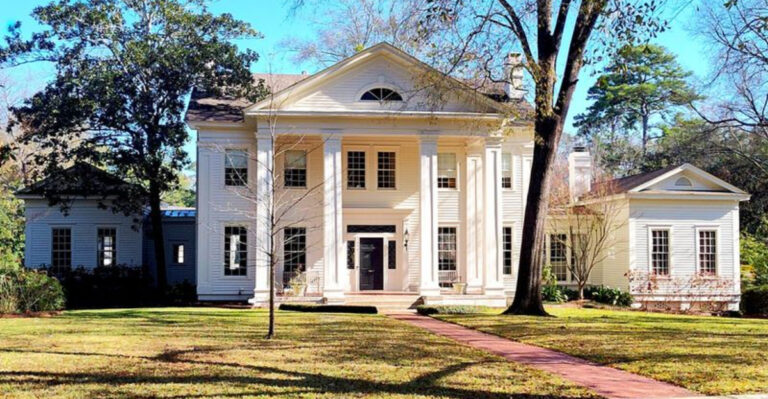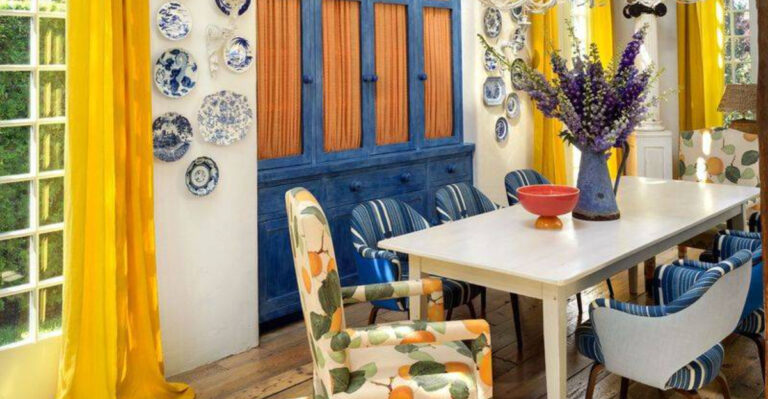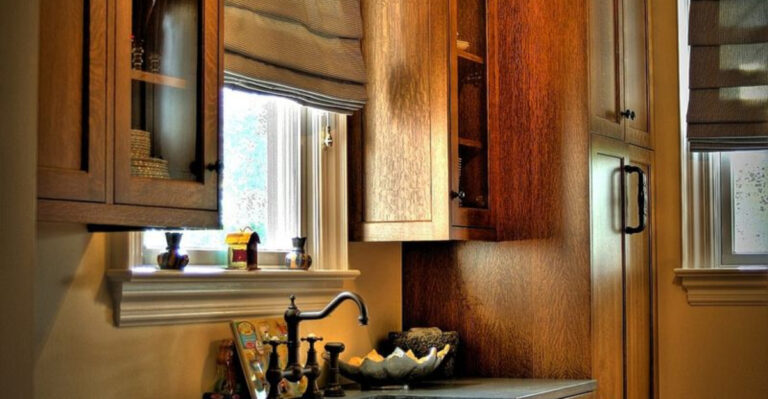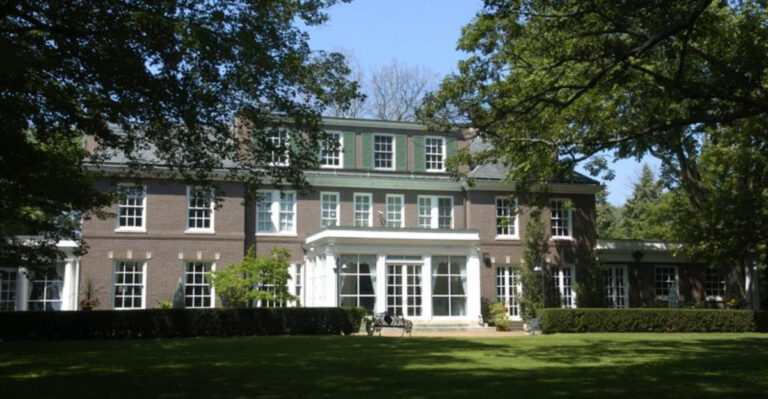15 East Coast Mansions That Channel Old Money Vibes
The East Coast of America is dotted with magnificent mansions that whisper tales of bygone eras and old money elegance.
These architectural masterpieces showcase the opulence and refined taste that defined America’s wealthiest families. From Newport’s summer cottages to Charleston’s antebellum estates, these grand homes offer a glimpse into a world of privilege few will ever experience.
1. The Breakers, Newport, Rhode Island
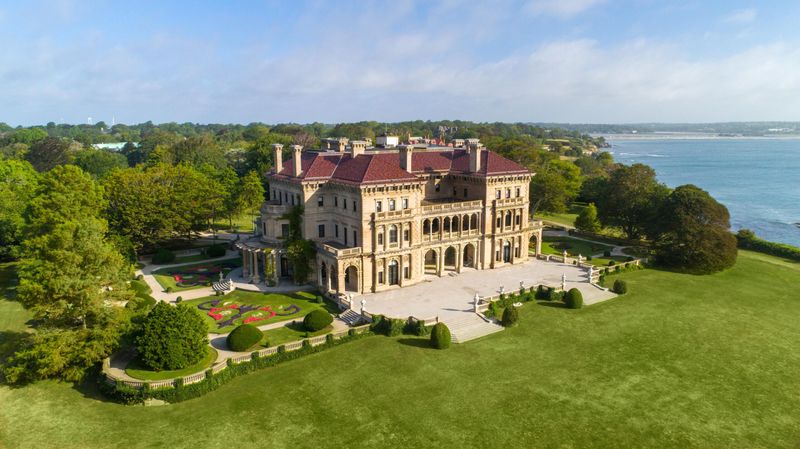
Standing majestically along Newport’s famous Cliff Walk, this Italian Renaissance-style palace was the Vanderbilt family’s summer retreat. Completed in 1895, it boasts 70 rooms spread across 125,000 square feet.
Gold leaf ceilings, rare marble, and priceless art fill this monument to America’s Gilded Age. Visitors often gasp when entering the Great Hall with its soaring ceiling and intricate details.
2. Biltmore Estate, Asheville, North Carolina
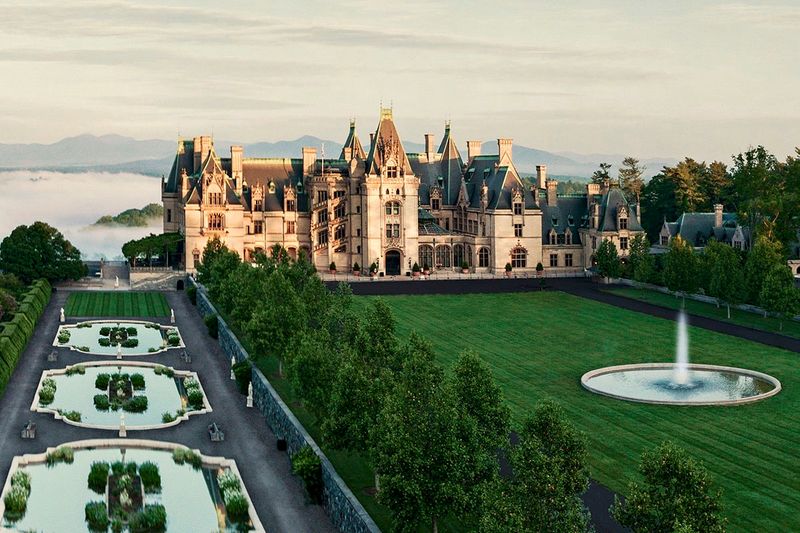
Would you believe America’s largest privately-owned home sits nestled in the Blue Ridge Mountains? George Vanderbilt’s 250-room French Renaissance chateau spans a staggering 175,000 square feet.
Completed in 1895, this architectural marvel features 35 bedrooms, 43 bathrooms, and 65 fireplaces. The estate’s 8,000 acres include formal gardens designed by landscape architect Frederick Law Olmsted of Central Park fame.
3. Marble House, Newport, Rhode Island
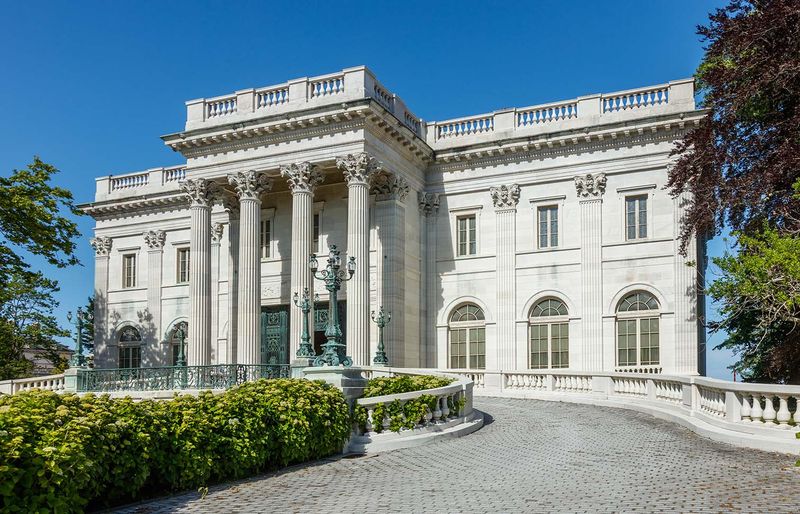
Alva Vanderbilt’s “cottage” makes an unforgettable statement with 500,000 cubic feet of marble adorning its Beaux-Arts exterior and interiors. Built between 1888 and 1892 for a staggering $11 million ($300 million today), it was her strategic social headquarters.
The Gold Room dazzles with 22-karat gold leaf covering every surface. Behind the opulence lies a fascinating story of Alva’s social ambitions and later advocacy for women’s suffrage.
4. Rosecliff, Newport, Rhode Island
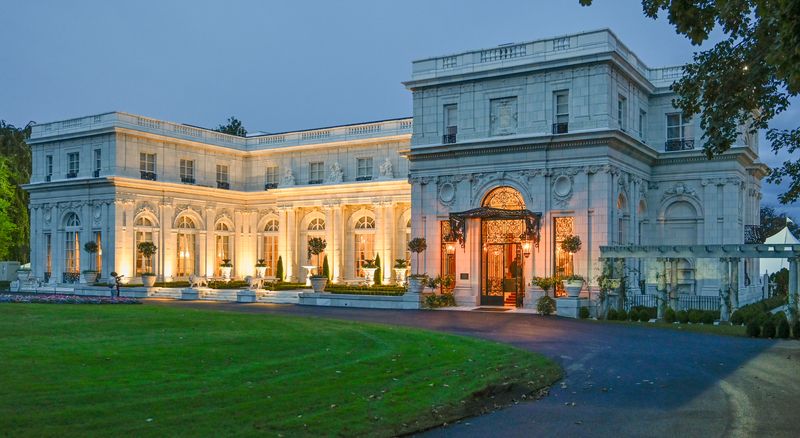
Inspired by the Grand Trianon at Versailles, this elegant white terracotta mansion was commissioned by silver heiress Theresa Fair Oelrichs in 1899. Its heart-stopping feature? A heart-shaped grand staircase that sweeps dramatically into the ballroom.
Famous for hosting lavish parties, Rosecliff’s ballroom is the largest in Newport. Film buffs might recognize it from “The Great Gatsby” (1974) and “27 Dresses,” where its timeless elegance provided the perfect backdrop.
5. The Elms, Newport, Rhode Island

Coal magnate Edward Berwind’s summer retreat mimics the refined elegance of mid-18th century French châteaux. Completed in 1901, this architectural gem showcases the period’s obsession with European grandeur and technological innovation.
Behind the scenes, a marvel of early 20th-century technology kept the mansion running. The basement housed one of America’s first electrical ice-makers and a massive coal-fired heating system, while hidden servants’ corridors allowed staff to move invisibly.
6. Rough Point, Newport, Rhode Island

Heiress Doris Duke’s oceanfront estate stands as a testament to one woman’s eclectic taste and preservation instincts. Unlike other Newport mansions, Rough Point remained a private home until Duke’s death in 1993.
Inside, priceless art mingles with personal touches – including custom-made doggie gates for her beloved pets. The sprawling grounds feature windswept gardens that embrace rather than fight the harsh coastal environment, reflecting Duke’s forward-thinking approach to landscape design.
7. Wentworth-Coolidge Mansion, Portsmouth, New Hampshire

Long before the Gilded Age mansions appeared, this rambling yellow colonial served as both home and office for New Hampshire’s first royal governor. Dating to the 1720s, it’s a rare example of early American political headquarters.
Forty-odd rooms sprawl in a seemingly haphazard arrangement along the waterfront. Unlike later, more formal estates, this mansion evolved organically over decades, with additions built as needed – a refreshingly practical approach to grandeur that reflects New England’s practical roots.
8. Kingscote, Newport, Rhode Island
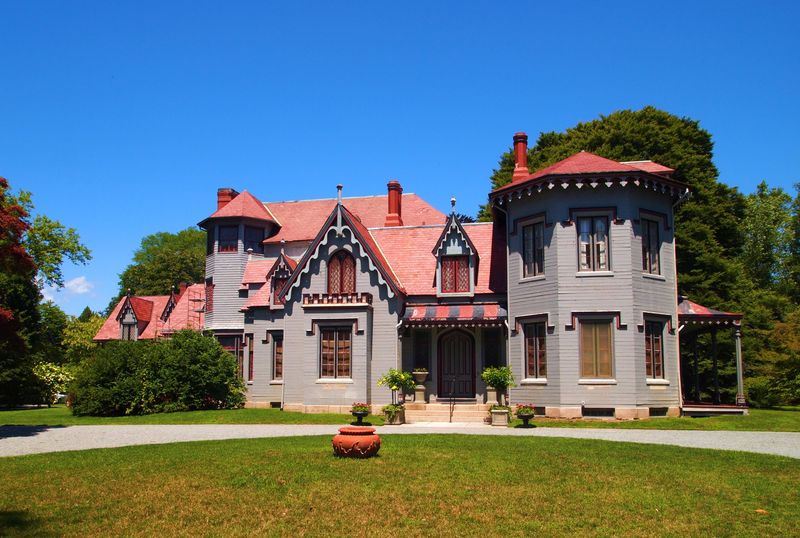
Before Newport became synonymous with marble palaces, this charming Gothic Revival cottage set the tone for summer living. Built in 1839, it’s one of America’s earliest vacation homes designed in this romantic style.
The dining room showcases a revolutionary use of materials – cork ceiling tiles and Japanese bamboo patterns – decades before such global design influences became fashionable. Kingscote represents the more understated elegance that preceded the competitive mansion-building of later decades.
9. Edith Wharton’s The Mount, Lenox, Massachusetts
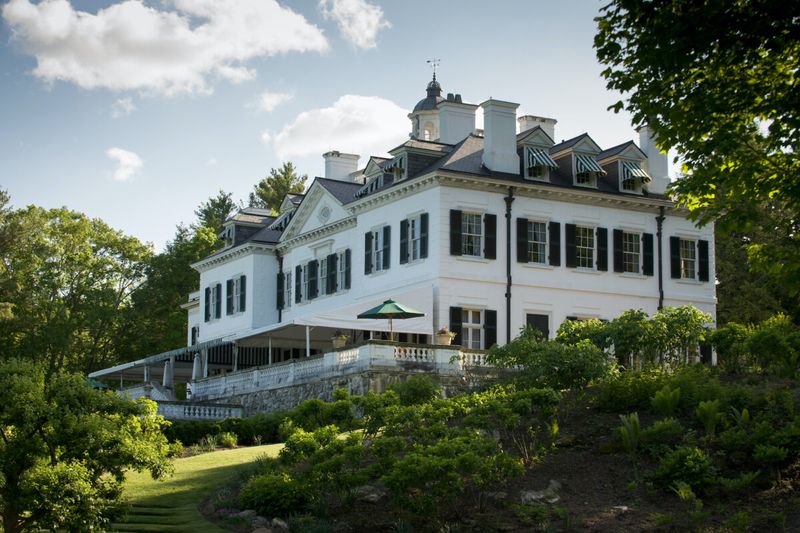
Literary enthusiasts flock to this graceful country estate designed by Pulitzer Prize-winning author Edith Wharton herself. Completed in 1902, The Mount embodies the principles Wharton outlined in her influential book “The Decoration of Houses.”
Classical proportions and thoughtful sightlines create a sense of harmony throughout. Wharton’s beloved gardens reflect her belief that outdoor spaces should connect seamlessly with interior rooms. Here, she wrote some of her most acclaimed works, including “The House of Mirth.”
10. Lyndhurst Mansion, Tarrytown, New York

Gothic architecture reaches its romantic peak at this dramatic Hudson River estate. With its asymmetrical outline, pointed arches, and fantastical turrets, Lyndhurst looks like it stepped from the pages of a medieval fairy tale.
Railroad tycoon Jay Gould made this his country retreat in the 1880s. The mansion’s brooding presence has made it a favorite for filmmakers seeking Gothic atmosphere. Its 67-acre grounds offer breathtaking views across the Hudson River to the distant Palisades.
11. Vizcaya, Miami, Florida
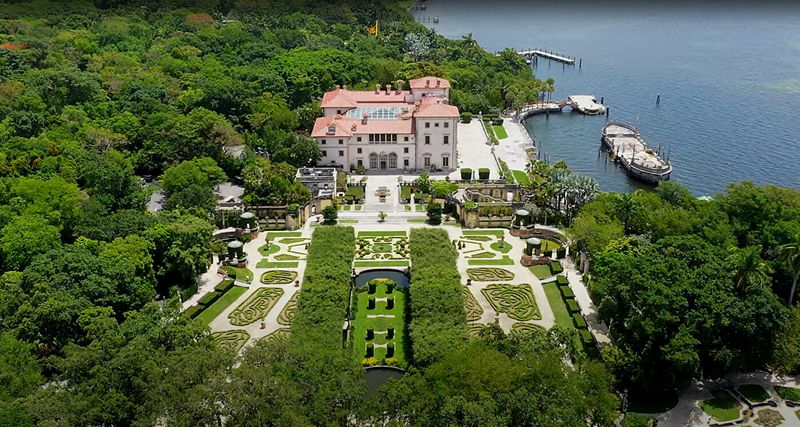
Industrialist James Deering created this Mediterranean fantasy on Biscayne Bay between 1914 and 1922. Imagine an Italian Renaissance villa transported to Florida’s tropical setting, complete with European antiques spanning 2,000 years.
The 34-room main house centers around an interior courtyard open to the sky. Elaborate formal gardens extend to the water’s edge, featuring stone barges, fountains, and classical sculptures. Hurricane-resistant construction has helped this masterpiece survive a century of tropical storms.
12. Nemours Estate, Wilmington, Delaware
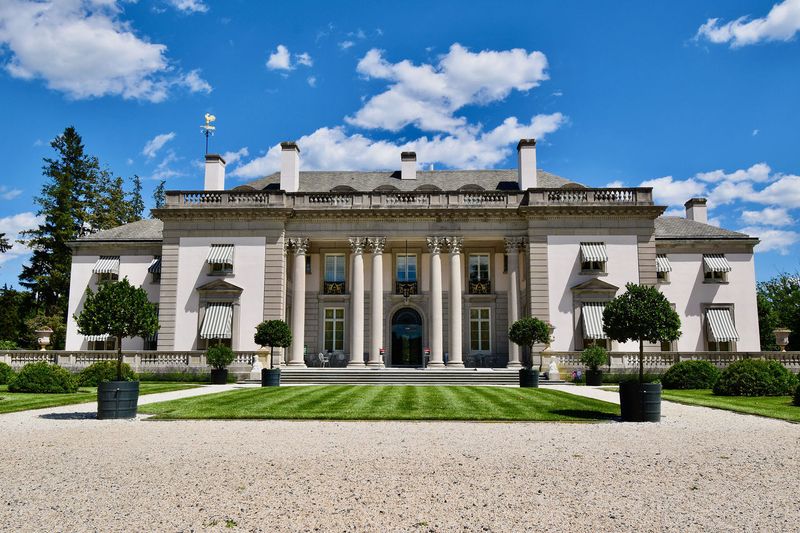
French royalty never lived here, but you’d never know it! Alfred I. duPont built this 77-room Louis XVI-style château in 1909 as a gift to his second wife, Alicia. The mansion’s formal gardens span 200 acres – the largest French-style gardens in North America.
A spectacular fountain display features 157 jets, while gilded statuary dots the landscape. Inside, rare French furniture and tapestries create an atmosphere of unparalleled luxury. Even the basement housed opulence with a two-lane bowling alley and billiards room.
13. Ca’ d’Zan, Sarasota, Florida

Circus king John Ringling and his wife Mable fell in love with Venice and created their own Venetian palace on Sarasota Bay. Completed in 1926, the name literally means “House of John” in Venetian dialect.
Colorful glazed tiles, twisted columns, and Gothic arches capture the essence of Venice’s palazzos. The Court of Dwarf Cypresses leads to a marble terrace overlooking the water. Inside, the opulent Court of Babylon room features a ceiling painted with celestial scenes and zodiac symbols.
14. Oheka Castle, Huntington, New York
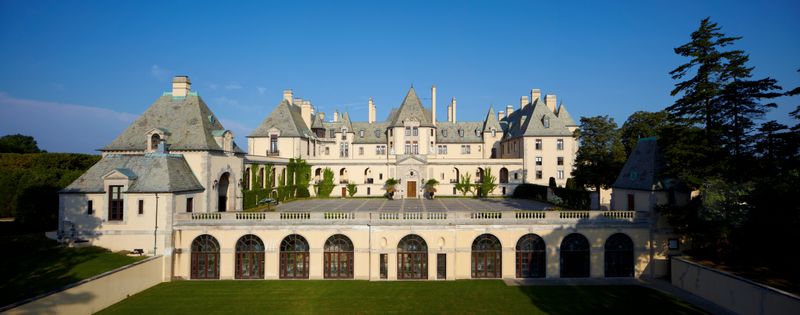
F. Scott Fitzgerald drew inspiration from this colossal French-style château for his description of Gatsby’s house. Financier Otto Hermann Kahn built it in 1919 as the second-largest private home in America, featuring 127 rooms and 109,000 square feet.
The name “Oheka” comes from the owner’s initials. During Prohibition, lavish parties here featured hidden rooms for illicit drinking. The formal gardens were designed by the Olmsted Brothers firm and recently restored to their original splendor after decades of neglect.
15. Winterthur, Wilmington, Delaware
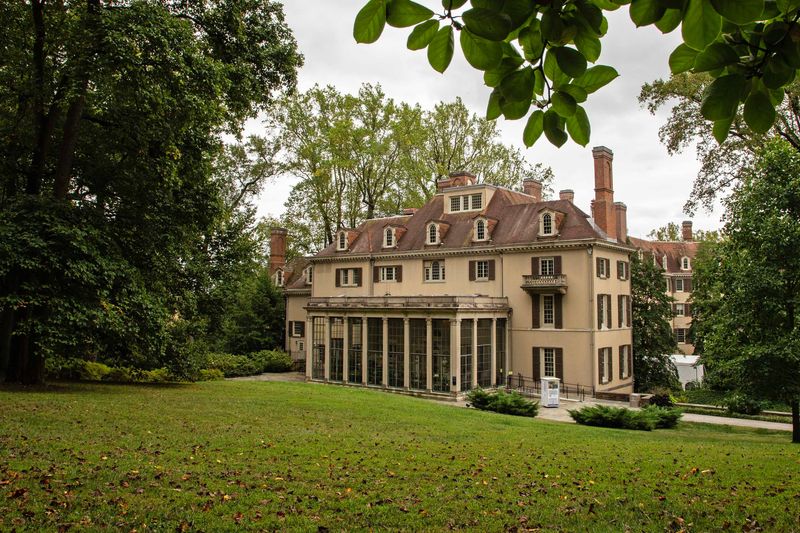
Henry Francis du Pont transformed his childhood home into an unparalleled showcase for American decorative arts. This 175-room country estate houses nearly 90,000 objects made or used in America between 1640 and 1860.
Winterthur celebrates distinctly American craftsmanship. The surrounding 1,000 acres include a 60-acre naturalistic garden that du Pont designed himself. Each room inside represents a different period of American design, arranged as if frozen in time.


